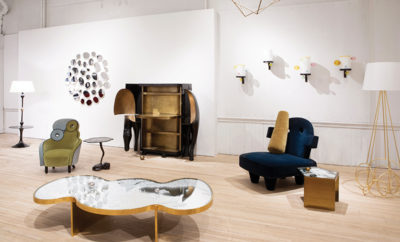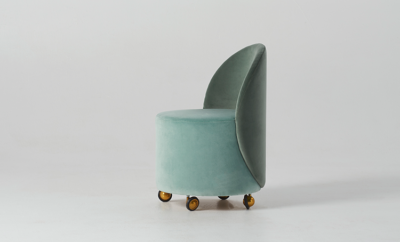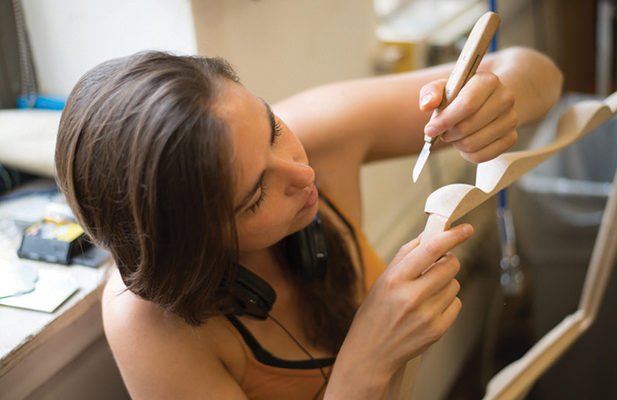 Miriam Carpenter working as a Windgate ITE Resident Fellow at the Center for Art in Wood in Philadelphia, 2014. AMBER JOHNSTON PHOTO
Miriam Carpenter working as a Windgate ITE Resident Fellow at the Center for Art in Wood in Philadelphia, 2014. AMBER JOHNSTON PHOTO
Design
Miriam Carpenter: Ethereal Magic in Wood
MIRIAM CARPENTER, AN ARTIST and furniture maker, is always creating difficult problems for herself. She works at them assiduously, deftly, patiently, hopefully. And the results, more often than not, are very beautiful.
On this early summer day, though, we are examining something she considers a failure. It is an example of the kind of object for which she is becoming well known, a delicate feather made from a block of white oak. She doesn’t really carve the wood. Rather, using mostly tools she has made or modified for the purpose, she excavates the wood, and uses its deep structure of dense medullary rays and rings to reveal very thin undulating forms.

Feather 11,886, 2016, in hand-carved and burnished wenge. Courtesy Miriam Carpenter
The result is quiet, small, hard-won magic. The revelation of the structure of the tree in the delicacy of the feather seems to say something about the shape of life itself. “The feather gives form to an experiment which is to find the potential within the cellular structure of various species,” she has written. “The feather symbolizes that which is ethereal— the soul, contemplation—is deeply complex within the framework of a simple form, and is a testament to the resilience of nature. To me, it represents life and death, and the evolution of our planet.”
The feathers grew from an invitation to make a work for a project in Canada titled Decoys. Many wood artists might have responded by making a really beautiful duck, but she did something else entirely. She has made twenty-five feathers so far, each one unique in structure and feeling. The simplest took two weeks to make, others longer. Collectors who know about them are eager to buy one. “I will never sell this,” she says of the feather we are examining, pointing out where she went wrong. I am not sure I can see the error, even with my reading glasses. But in keeping this failure, she at least has one she can show visitors, and it reminds her of something important. “Everything I do is an experiment,” she says, adding that experiments don’t always work.
When we met, Carpenter was looking forward to a summer in residence at Purchase College, State University of New York, where she was planning to make her first chair—a rocker, because she likes things that move. “I may do something based on a bird’s wing. At least that’s an idea I have right now,” she says. She is also planning to work on a folding screen inspired by her sister’s work in plant pathology and microbiology.
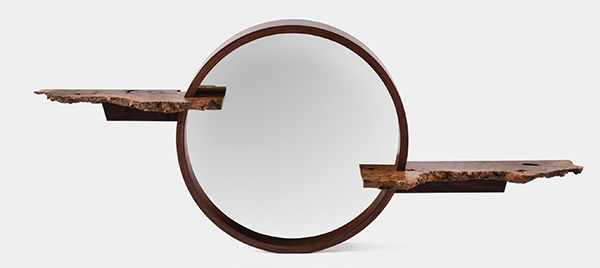
The Enso mirror, 2013, in American black walnut with maple burl shelves, was designed for George Nakashima Woodworker, SA. Christian Gianelli Photo
It might seem surprising that an artist like Carpenter would wait until the age of thirty-three to try to make her first chair. But she works slowly, and each piece she makes is an exploration of some idea, or more often an aesthetic idea fused with a scientific or technological one. For example, a table whose legs are stylized jaguars grasping the top in their mouths is dramatic in itself. But it also employs innovative wood-turning techniques. A larger table seems to be a continuous band, whose top curves downward to provide its support. Its form, however, derives from the numbers in the Fibonacci sequence—a mathematical relationship seen in many living things.
“Miriam is incredibly talented, innovative, and smart,” says Robert Aibel, owner of Moderne Gallery in Philadelphia, which has shown her work at fairs in New York and Miami, and will do so again this November at the Salon Art + Design in New York. “I firmly believe that she will be one of the major figures of the twenty-first century” he adds. Aibel, who is known for dealing in the work of George Nakashima and Wharton Esherick, rarely represents living artists. His frustration, he says, and that of his clients, is that she has produced relatively little work.
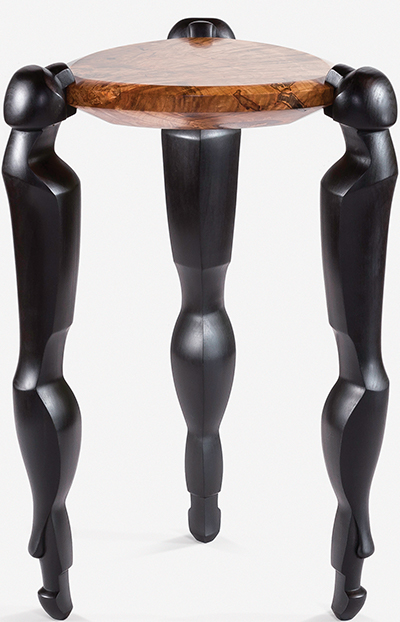
Carpenter’s Jaguar table, 2016, has ebonized poplar legs and a figured-maple top. Christian Gianelli Photo
I first encountered Carpenter when, soon after graduating from the Rhode Island School of Design, she was working, as assistant designer to Mira Nakashima, at George Nakashima Woodworker in New Hope, Pennsylvania. During the seven years she worked there, ending in 2014, she designed several pieces of furniture in the Nakashima idiom, including one named the Carpenter coffee table. “It was challenging to work within a consistent set of rules, to always be asking yourself ‘Would George do that?’ ‘Would Mira do that?’” she recalls.

Carpenter coffee table, 2013, in American black walnut base with claro walnut top, designed for George Nakashima Woodworker, SA. Christian Gianelli Photo
She has moved a mile or so away now, as artist in residence at the Raymond Farm Center, the house that Antonin Raymond, an American architect who had an important career in Japan before (and after) World War II, remodeled for himself upon his return. From the road, it looks like a sprawling, Quakerishly random old farmhouse; from the rear, where it overlooks a pond, it feels Japanese. When Raymond intervened to get George Nakashima and his family released from one of the internment camps in which Japanese-Americans were confined during the war, he established the Bucks County furniture tradition to which Carpenter, who grew up nearby, is heir. Now, Raymond’s descendants are seeking to re-establish it as a center for arts and design, and Carpenter is the first resident.
Carpenter’s current pieces do not look Nakashima-like, though she attributes much of her reverence for wood to her work at Nakashima, where she began to see every knot, every ring and vein as evidence of the tree’s struggling and flourishing. She has moved beyond wood, carving plastic and making Japanese- inspired ceramics and silkscreens, for which she creates surprising and elegant wooden frames. She used computer-assisted fabrication in the Fibonacci table and seems quite willing to embrace other new materials and technologies, but on her own experimental terms.
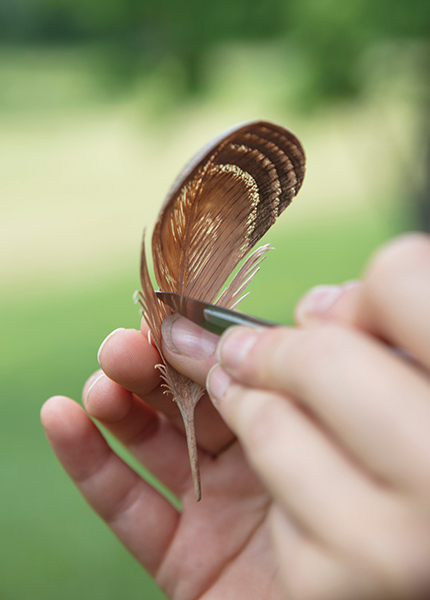
Carpenter carving at the Raymond Farm Center in 2017. Charlotte Raymond Photo
As we sat at the kitchen table, she fiddled a bit with the cubes of oak she uses to make her feathers. “At Nakashima we had a warehouse full of extraordinary wood,” she says, laughing. “I have a box of blocks.” But Carpenter can take any one of those blocks and release something unique and extraordinary that is hidden within.



